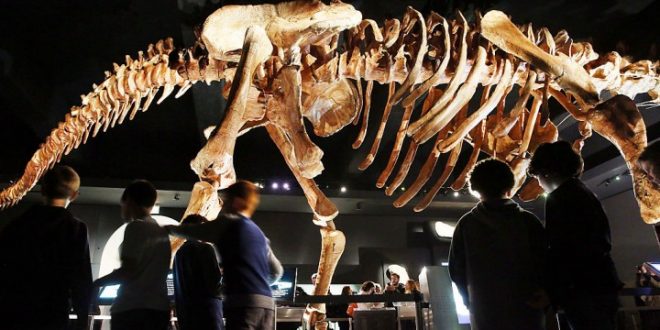New fossil evidence discovered by researchers at the University of Cambridge could alter the dinosaur family tree, recent findings published in the journal Nature report.
According to BBC News, lead author Matthew Baron of Cambridge and his colleagues looked at fossil evidence and determined that the dinosaurs may have actually originated in the Northern Hemisphere – possibly in a region that is currently part of the UK.
“The northern continents certainly played a much bigger role in dinosaur evolution than we previously thought and dinosaurs may have originated in the UK,” Baron told the media outlet. “We may be looking at the possibility that the very earliest dinosaurs were roaming an area that has become Britain and the group itself could have originated on these shores.”
It was British paleontologist Harry Govier Seeley who, 130 years ago, placed dinosaurs into one of two distinct groups or “clades” based on how their hip bones were arranged. Dinosaurs which had lizard-like hipbones were classified as Saurischia, while those with bird-like one were called Ornithischia.
Over time, Seeley’s system was fine-tuned so that dinosaurs were placed in one of three distinct lineages: Ornithischia, Sauropodomorpha, and Theropoda. In 1887, he placed sauropodomorphs (including dinosaurs such as Diplodocus and Brontosaurus) together with the theropods (T. rex and Velociraptors) in the Saurischia. While ornithischians and saurischians were at first thought to be unrelated, it was later discovered that both groups shared a common ancestor.
The new re-evaluation by Baron’s team, however, determined that some carnivorous theropods may have been incorrectly classified, according to BBC News. Their analysis has revealed that theropods should actually be classified in the same clade as bird-hipped dinosaurs, Ornithischia, because both types of dinosaurs had the potential to evolve bird-like hip arrangements.
“When we started our analysis, we puzzled as to why some ancient ornithischians appeared anatomically similar to theropods,” Baron explained in a statement. “Our fresh study suggested that these two groups were indeed part of the same clade. This conclusion came as quite a shock since it ran counter to everything we’d learned.”
“The carnivorous theropods were more closely related to the herbivorous ornithischians and, what’s more, some animals, such as Diplodocus, would fall outside the traditional grouping that we called dinosaurs,” he added. “This meant we would have to change the definition of the ‘dinosaur’ to make sure that, in the future, Diplodocus and its near relatives could still be classed as dinosaurs.”
In their study, the authors proposed a new family tree that would place members of Ornithischia and Theropoda together in a group known as Ornithoscelida, reviving a name first coined by the 19th-century evolutionary biologist Thomas Henry Huxley. Co-author Dr. David Norman called the “repercussions” of their work “both surprising and profound.”
“The bird-hipped dinosaurs, so often considered paradoxically named because they appeared to have nothing to do with bird origins, are now firmly attached to the ancestry of living birds,” he noted, telling BBC News that if their study “survives academic scrutiny and becomes accepted more widely,” that “all of the textbooks covering the evolution of the vertebrates will need to be re-written.”
Furthermore, their analysis of the dinosaur family tree suggests that dinosaurs did not first appear in the Southern Hemisphere – a belief supported by the fact that the oldest dinosaur fossils were unearthed in South American. The new re-classification, however, indicates that they might have just as easily originated in the north – a hypothesis aided by the recent discovery of key fossils in parts of England and Scotland, according to BBC News.
“This study radically redraws the dinosaur family tree, providing a new framework for unraveling the evolution of their key features, biology, and distribution through time,” said co-author Paul Barrett of the Natural History Museum. “If we’re correct, it explains away many prior inconsistencies in our knowledge of dinosaur anatomy and relationships and it also highlights several new questions relating to the pace and geographical setting of dinosaur origins.”
Agencies/Canadajournal
 Canada Journal – News of the World Articles and videos to bring you the biggest Canadian news stories from across the country every day
Canada Journal – News of the World Articles and videos to bring you the biggest Canadian news stories from across the country every day



